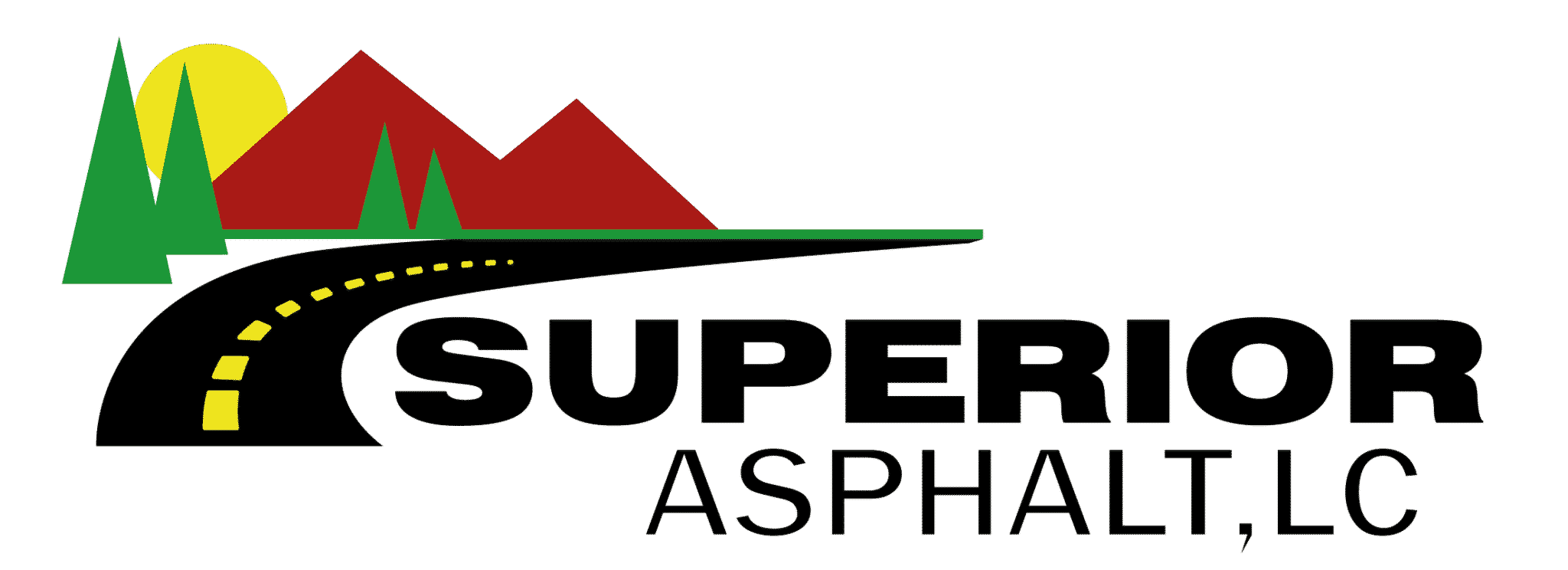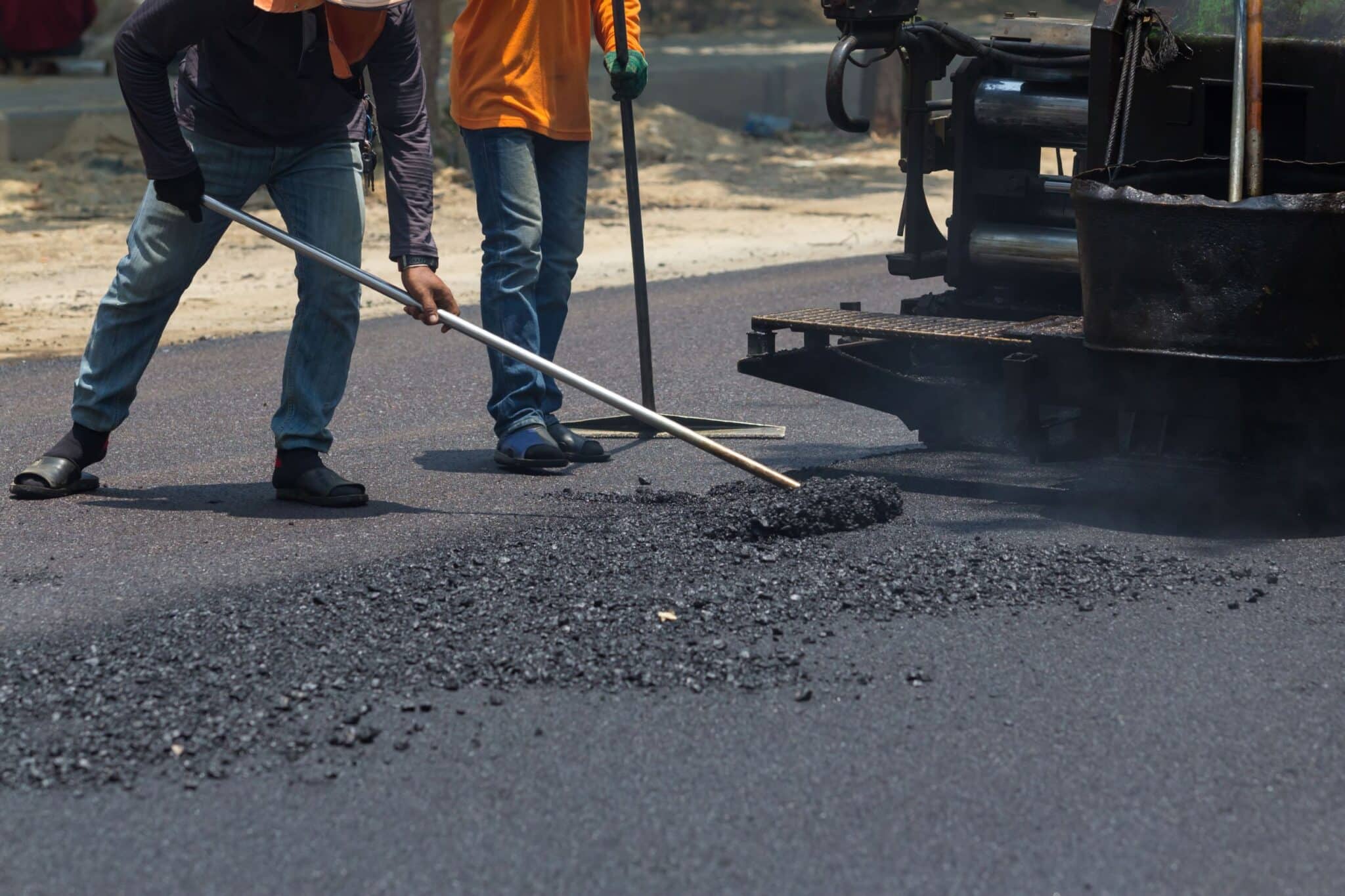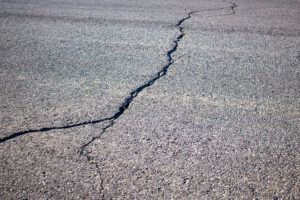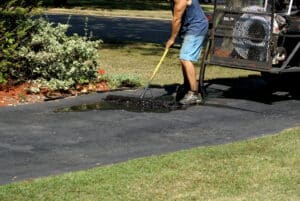What is an asphalt overlay? This is a question that home and property owners should know the answer to. Understanding asphalt overlays is critical to pavement maintenance if you own a driveway, parking lot, or roadway. You may have heard of an asphalt overlay, but it is often confused with asphalt sealcoating and replacement.
An asphalt overlay involves applying a new layer of asphalt over an existing surface to improve the appearance and condition of the pavement. This method is an effective way to refresh your pavement, making it look new while extending its lifespan. The overlay process begins with preparing the existing surface, which may include cleaning, repairing cracks, and addressing any surface irregularities.
What is an asphalt overlay?
An asphalt overlay is a service used to repair damage or give the asphalt a new surface. It is thinner than conventional asphalt paving and is often used on driveways or low-traffic residential streets that do not need a thick layer. It can be used on roads and parking lots but with thicker layers. Asphalt overlay is less expensive than traditional asphalt paving and can be completed more quickly. As a result, it is often the preferred option for property owners in repairing damage to asphalt surfaces.
How Asphalt Overlay is Applied: The Steps Involved
The process of an asphalt overlay can be simplified into three steps:
- Clean the Existing Surface:
Begin by thoroughly cleaning the existing asphalt surface. This involves removing any dirt, debris, or oil that could prevent the new asphalt from bonding properly. A clean surface ensures that the overlay will adhere effectively, leading to a longer-lasting repair. Power washing or using industrial sweepers can help achieve a clean surface. - Apply a Tack Coat:
Next, apply a tack coat to the asphalt surface. This thin layer of binding agent acts as an adhesive between the old and new asphalt layers. The tack coat ensures that the new asphalt bonds securely to the existing surface, preventing slippage and enhancing the structural integrity of the pavement. Once the tack coat has dried, the surface is ready for the new asphalt layer. - Lay the New Asphalt:
Finally, apply the new asphalt layer over the tack coat. The new layer not only restores the smoothness and appearance of the pavement but also extends its lifespan. After the new asphalt is laid, it is compacted using rollers to ensure a solid, even surface that can withstand traffic and weather conditions.
An asphalt overlay is a simple process worth the return on investment because it has long-lasting benefits for your property. Well-maintained asphalt can last up to 20 years if it is routinely taken care of.
When is an asphalt overlay appropriate?
Over time, even well-maintained pavement can begin to show signs of wear, such as cracks, fading, or minor surface damage. An asphalt overlay not only addresses these issues by providing a fresh, smooth surface but also enhances the overall appearance of your property. Additionally, overlays can improve the structural integrity of the pavement, reducing the need for frequent repairs and extending its usable life.
It is important to note that an asphalt overlay does not repair all types of conditions or damages. If there are alligator cracks, the cracks can be sealed and renewed. Removing the damaged asphalt and starting from scratch is best if the damage is severe. Otherwise, you risk creating a weak spot that could further worsen down the road.
Asphalt overlays can also be overkill if the pavement is still in good condition. For example, crack sealing is recommended over overlays for asphalt cracks because it is simple, quick, and cost-effective. Minor cracks can be filled instead of applying an entirely new asphalt layer. For minor wear or cosmetic upgrades, an asphalt overlay is ideal.
Benefits of Asphalt Overlay Compared to Full Repaving
When considering pavement maintenance, many property owners weigh the options between an asphalt overlay and full repaving. While both methods have their place, an asphalt overlay offers several distinct advantages, making it an attractive choice for many situations.
Cost-Effectiveness: One of the primary benefits of an asphalt overlay is its cost-effectiveness. Since the existing pavement serves as the base, less material is required compared to full repaving, which involves removing the old surface and starting from scratch. This reduction in material and labor can lead to significant savings, making overlay an affordable solution for extending the life of your pavement.
Time-Saving: An asphalt overlay is typically faster to apply than full repaving, which means less downtime for your property. This is particularly important for businesses or public spaces where access needs to be maintained with minimal disruption. With an overlay, the project can often be completed in a fraction of the time it would take to completely repave the surface.
If you need help determining which asphalt service is best for you, contact us for a consultation to discuss your pavement’s condition.
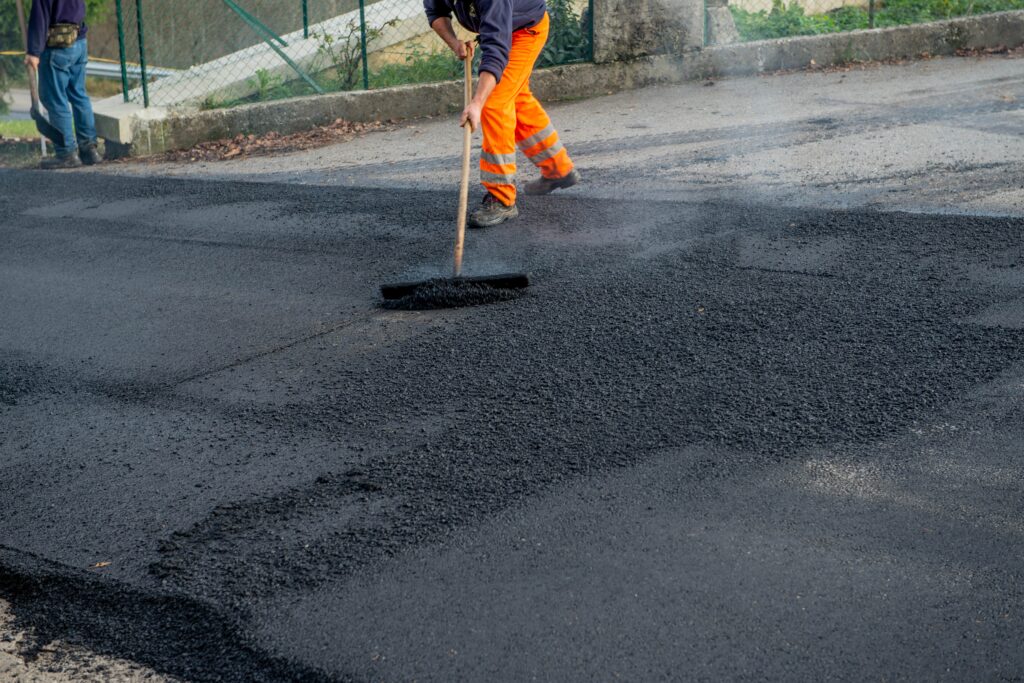
Benefits of an Asphalt Overlay
Asphalt overlays have many benefits when it comes to asphalt repair, including:
- Quick and efficient performance with minimal disruption to traffic
- Customizable to match the surrounding pavement and blend seamlessly
- Inexpensive compared to other overhaul projects
- Longevity conditions with proper maintenance
Asphalt pavement is a significant investment. Protecting it from many elements that deteriorate it over time is critical. Water, oil, vehicles, and the sun can cause pavement damage, and an asphalt overlay can help preserve its condition.
Frequently Asked Questions
How thick should an asphalt overlay be?
Asphalt overlay thickness must be thick enough to provide an adequate level of protection. If it is too thick, it causes drainage issues. Generally, an asphalt overlay should be between two and four inches thick. However, the exact thickness will depend on the existing pavement condition and the traffic amount it receives. For example, a road with heavy truck traffic will require a thicker asphalt overlay than a residential street.
How much does an asphalt overlay cost?
An asphalt overlay can cost anywhere from $2 to $4 per square foot, depending on various factors such as the condition of the existing pavement and the specific requirements of the project. Additional costs may be incurred if the asphalt thickness needs to be adjusted to accommodate heavy traffic or to address significant wear and tear.
How long will an asphalt overlay last?
Asphalt can last decades with proper care and treatment, and the same can be said for asphalt overlays. In addition, asphalt sealcoating is an effective way of extending the life of your asphalt and asphalt overlay. Sealcoating helps to protect against water damage, UV rays, and other factors that can cause asphalt to deteriorate. An asphalt sealcoat can add up to 5 years of life to your asphalt surface when properly applied. Consider adding professional asphalt sealcoating to your budget.
How long does it take asphalt overlay to cure?
Asphalt overlay needs at least 24 hours to cure fully. It could take longer to cure, depending on the weather, temperature, and humidity. If the asphalt is applied in very thick layers, it may take up to a week for the asphalt to cure completely.
Contact Superior Asphalt for Your Asphalt Needs
Do you own a driveway, parking lot, or roadway in Utah or Wyoming? Superior Asphalt offers asphalt repair and maintenance services for home and property owners, including crack sealing, sealcoating, repairs, and parking lot striping. Our team has years of industry experience and is passionate about providing quality service. We understand that every project is unique, and we take the time to listen to our clients to create a plan that meets their specific needs.
Improve your pavement’s appearance or condition today.
